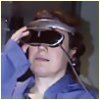|
Being the adventures of four jet-setting quality consultants who like to talk shop even more than they like good food and drink.
This is fantasy consulting. For the real thing, go to Fell Services' Quality pages.

|
Dietrich thought he had ways of making me talk by sprinkling nutmeg over the goblet of honey liqueur. So he can't have been listening to recollections of my first memory - being driven a hundred miles while the Dawn Chorus competed with the rattle of the landrover engine, to look at the beehives which had been cannily placed at the edge of the clover fields; and he hadn't paid too much attention to my 2,547th memory either, which had been kneeling on the red, rough edge of the home made tennis court when a bee zoomed in, and stung my thigh. In other words, if you want to know about qualiy circles, give me a raspberry martini. Or, failing that, anything without honey.
But he didn't just want to know about quality circles, as how they were set in the States in the 1970s. This was going to be a lot of fun since, to be totally authentic, we'd have to use the names of what the companies had actually been, back then.
Honeywell (I meant, in Minneapolis) was relatively easy, though they must have wished for a time machine, since they didn't involve the Unions when they were setting them up. And that brings me to the First Law of Quality Circles: to call them "Quality Circles" is a kiss of death. Anything else will do. Honeywell called them "Production Teams", in Hughes, they were "Hughes Teams", 3M called them "Participation Schemes", Westinghouse Defence Group (being both more imaginative and paranoid than the rest) let the members choose the name of each circle, as part of the brainstorming and networking in the first meeting.
Dietrich had got hold of a contemporary Juran paper which quoted the creation of 10,000 quality circles in Japan in four years. He sneered a bit, twitching that aristocratic Roman nose (or did he just want to pick it?) when, after counting on my fingers, I recalled that Hughes had 100, Northope Aircraft Group 44 and TRW Space 13 (4 failures) in 1980.
What he was having trouble understanding is that you can't just pick up a model, fly it half way across the world, drop it into an alien culture and expect instant miracles. The only thing to do is (as for so many quality initiatives), sell the principle to the top management and then adapt the philosophy to your own company. For example, in the States, the Quality Circle variants could meet in work time (unlike in Japan), could aim to tackle problems without prior quality tools training (just so unlike in Japan) and could be cross functional (again, normally unlike Japan). Our memories were getting confused, as much by the alcohol as having to wade through the past, but while 1970s Japan appears to have had a flatter management structure where the Gemba cho would have automatically been the leader of his small team and could suggest to them that they should takle this li'l ol' problem so as not to bother the managers, the 1970s in Europe was very much more hierarchical. I think - it was 25 years ago, after all.
Dietrich was gazing into the distance, sliding his finger round the rim of his glass: a sign of boredom. Perhaps this interest in the history of that tiny fragment of quality had been a smokescreen for brainstorming the possibility of doing them again. He needed to articulate the problem and then work out the resources who could best help. Then he'd have to show how long he estimated this problem would take to solve, and what the benefits would be, to obtain permission from the relevant leaders to lay hands on their precious staff. He'd either have to choose people who knew about Paretos or Binominial Distribution or tutor them himself ... no wonder he looked glum. In a lot of ways, it would be quicker to do it all himself.
posted by Dovya R @
12:03 AM :
|
Monday, May 06, 2002  |
|
|